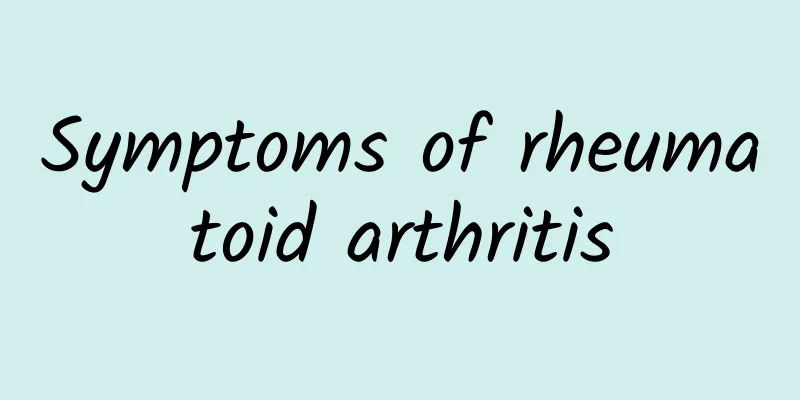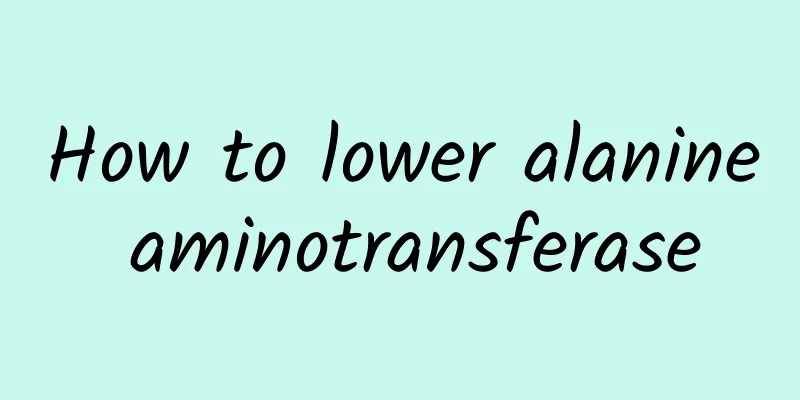Symptoms of rheumatoid arthritis

|
Generally speaking, most people don’t know or understand much about the symptoms of rheumatoid arthritis in the elderly, because in our daily lives, most of the people who suffer from the disease are elderly people. In addition, we rarely come into contact with people with such diseases, and we rarely live with the elderly, so we are not very familiar with this aspect. Not to mention knowing the symptoms of rheumatoid arthritis. What people don’t know is that the symptoms of rheumatoid arthritis are concentrated in several aspects, making it a more troublesome disease for the elderly. Therefore, people who care for the elderly need to have a thorough understanding of the symptoms of the disease, and treatment is an indispensable approach. ① Morning stiffness: Joint stiffness is more obvious in the morning and is relieved after activity, which is called morning stiffness. Usually after getting up, the affected joints are stiff and painful, and movement is limited. As time goes by, movement increases and the stiffness eases. ② Pain: Fingers, wrists, and toes are swollen and painful first, either singly or multiple times, gradually spreading to the elbows, shoulders, knees, iliac joints, and temporomandibular joints, and the disease is symmetrical. The pain is aggravated by recurrence of the disease, changes in weather, or cold stimulation. ③ Swelling: There is inflammatory effusion in the affected joint cavity, which manifests as diffuse swelling or redness and swelling in the joints, mainly in the four small joints. The finger joints are mostly fusiform and swollen. When the condition is relieved, the joint swelling may disappear. ④ Movement disorders: As the disease progresses, muscles atrophy, fibrous tissue proliferates in bones and joints, and the tissues around the joints become tough, making it impossible for the joints to resume normal functional activities. When the disease develops to the late stage, the joints become ankylosed or subluxated, the metacarpophalangeal lateral deviation occurs, and the finger joints become goose-neck, telescope-shaped, bouquet-shaped or hook-shaped deformities. The symptoms of rheumatoid arthritis in the elderly introduced above are generally divided into four forms, but if you do not pay more attention to your body, it will not help alleviate the condition. There are many causes of this type of disease, so we should pay more attention to the elderly at home in our daily lives, which is conducive to the recovery of the disease. |
<<: Clinical manifestations of myocardial infarction
>>: Treatment of myocardial infarction
Recommend
What should I do if I get ringworm on my face? Understand the cause and then treat
Common ringworms grow on the arms and back. Of co...
What is Lecithin
Do you know what the three major nutrients are? T...
Three month fetal genital development
Generally, the genitals of a three-month-old fetu...
Why do you grind your teeth at night?
I believe that many people have the habit of grin...
What to do if a child has rash
It is a common skin phenomenon for children to ge...
What causes blisters on thumb?
In our daily life, there will be various problems...
What is the reason for red urine? Be careful of stones!
If the urine appears red, it means that there may...
Can a dose of Chinese medicine be taken for three days?
In order to fully extract the medicinal ingredien...
What is the cause of abdominal pain in early pregnancy?
Everyone knows that the body will have some speci...
The efficacy and contraindications of grass jelly
Grass jelly made with burnt grass jelly is popula...
It’s a pity to throw away the rice water! No one knows its medicinal value.
Many of you may have heard that washing your face...
Can raisins be soaked in wine?
For friends who like to drink, they will feel unc...
Precautions for 4D color Doppler ultrasound
Medical technology is now very advanced. You can ...
Mental retardation when growing up
We all know that human intelligence is almost alw...
How to boil reed root in water to get rid of bad breath
Reed root is a common Chinese medicinal material....









